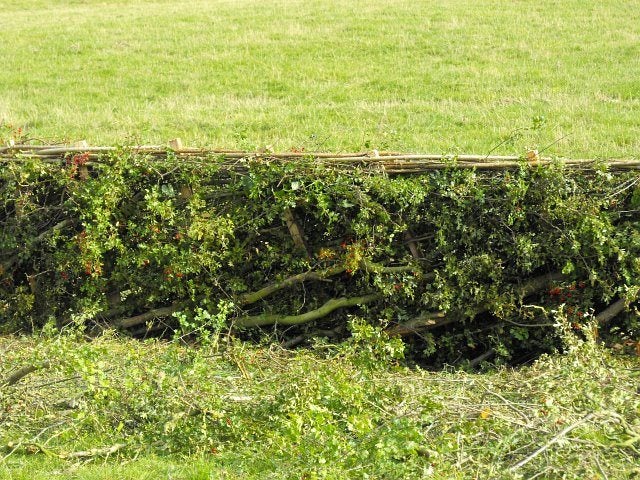What Is Pleaching: Tips On Pleaching Hedges And Trees


Pleached trees, also called espaliered trees, are used to create arbors, tunnels, and arches as well as the “hedge on stilts” look. This technique works well with chestnut, beech, and hornbeam trees. It also works with certain fruit trees including lime, apple, and pear. Read on for further information about the pleaching technique and how to pleach trees.
What is Pleaching?
What is pleaching? Pleaching is a very specific garden term. It refers to a way of interlacing young tree branches along a framework to produce a screen or hedge. The pleaching technique is a style of growing trees in a line with their branches tied together to form a plane above the trunk. Generally, the branches are tied onto a support to create tiers. Occasionally, they grow together as if they were grafted. Pleaching was one of the defining aspects of 17th and 18th-century French garden design. It was used to mark “grand allées” or to protect intimate spaces from public view. It has come back into fashion in modern gardening.
Pleaching Hedges
When you use the pleaching technique to create a united line of trees, you are essentially pleaching hedges. Before you decide to go in for DIY pleaching, it is important to understand the type of care and attention you need to give pleaching hedges. A line of trees planted in your yard, once established, needs little assistance or energy from the gardener. However, when you use the pleaching technique, you must prune and tie branches to the supports at least twice a growing season. You may need to invest an entire day to complete the bi-annual work on 10 pleached trees.
How to Pleach Trees
If you are interested in how to pleach trees, you may have an easier time than you would have a few years ago. This is because some garden centers are offering ready-made pleached trees for sale. Investing a little more money in pre-pleached hedge plants will get you started much faster than if you start from scratch. If you are going to do DIY pleaching, the idea is to tie new, young supple shoots into a support system in a criss-cross pattern. Plait a tree’s lateral branches with those of the trees planted next in the row on either side. Remove the supports for a pleached walk once the framework is strong. Arbors and tunnels retain the framework permanently. If you are creating a pleached tunnel, be sure it is tall enough that you will be able to pass through it once the pleaching technique spreads the branches onto the support.
Sign up for the Gardening Know How newsletter today and receive a free copy of our e-book "How to Grow Delicious Tomatoes".

Teo Spengler is a master gardener and a docent at the San Francisco Botanical Garden, where she hosts public tours. She has studied horticulture and written about nature, trees, plants, and gardening for more than two decades, following a career as an attorney and legal writer. Her extended family includes some 30 houseplants and hundreds of outdoor plants, including 250 trees, which are her main passion. Spengler currently splits her life between San Francisco and the French Basque Country, though she was raised in Alaska, giving her experience of gardening in a range of climates.